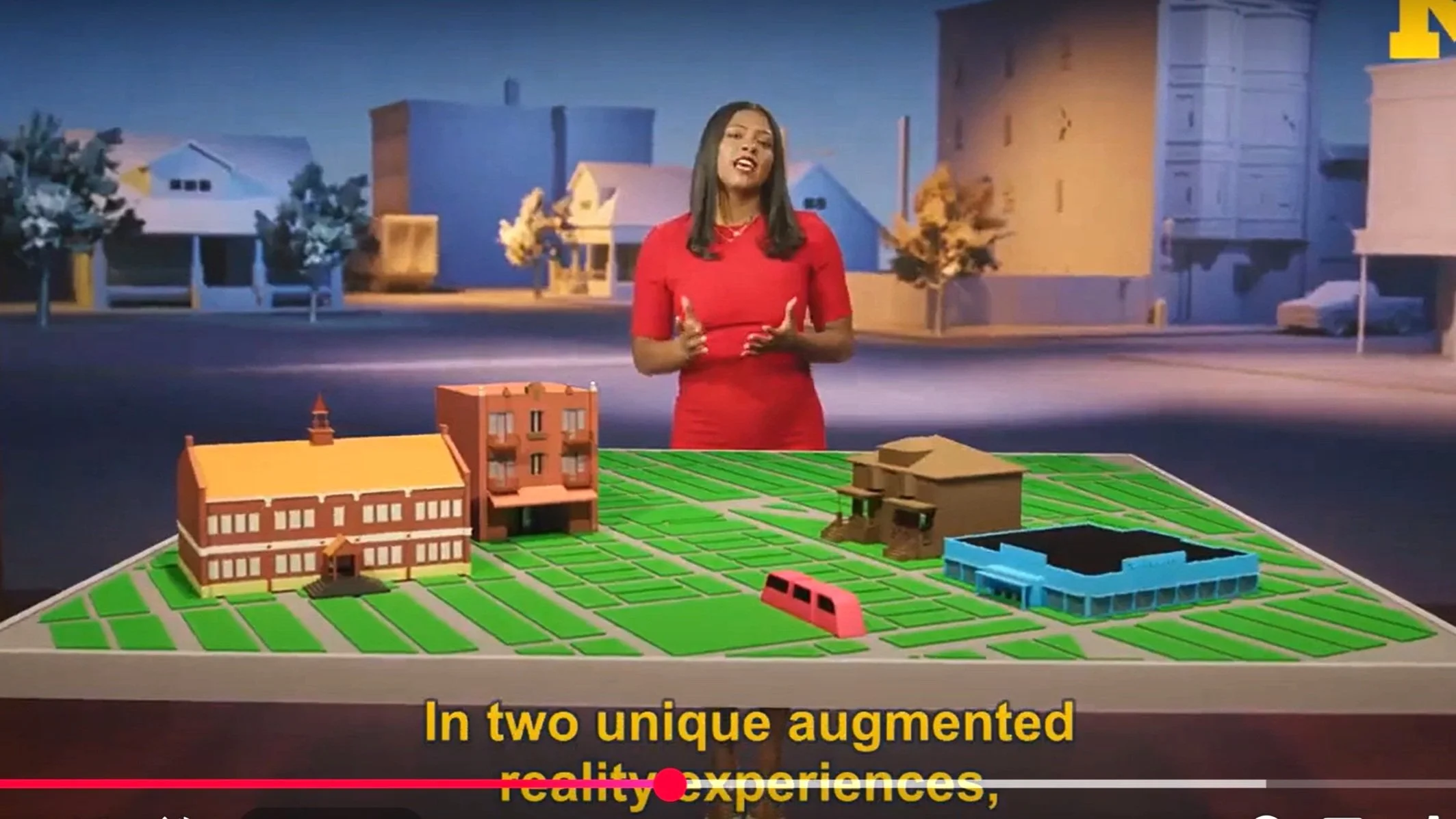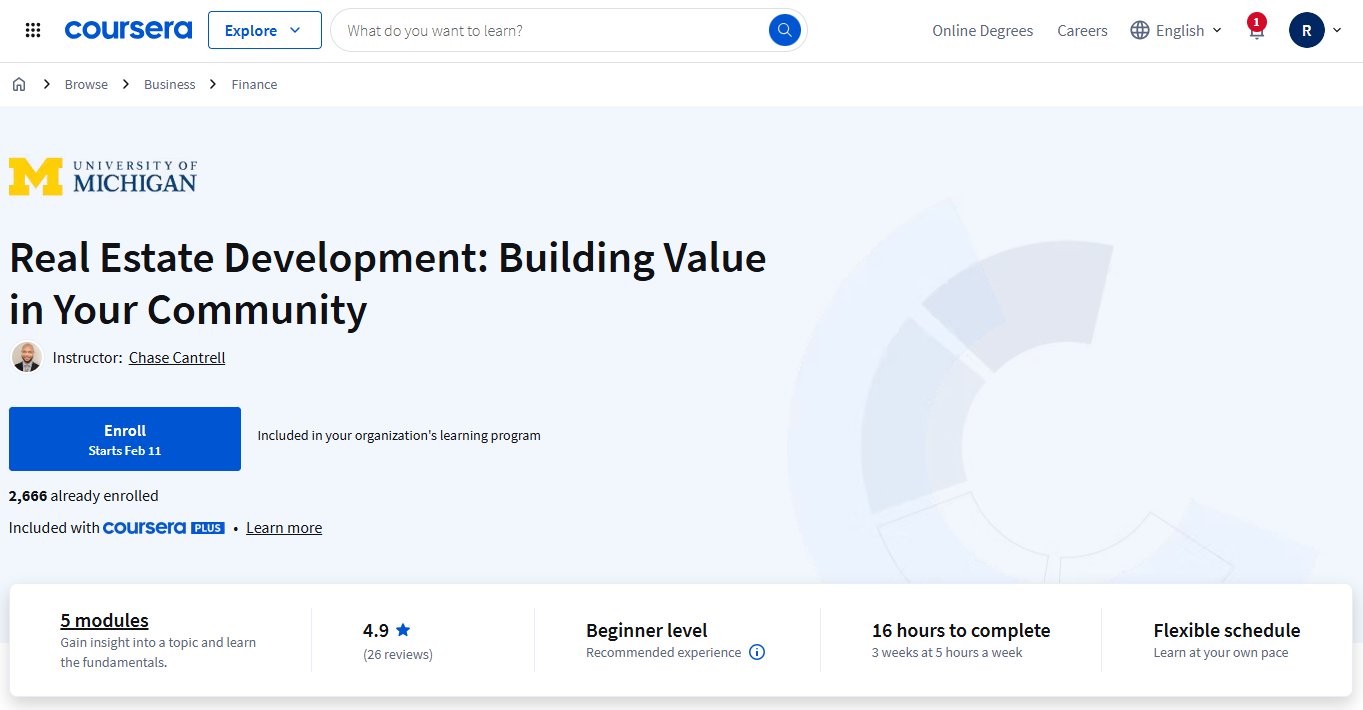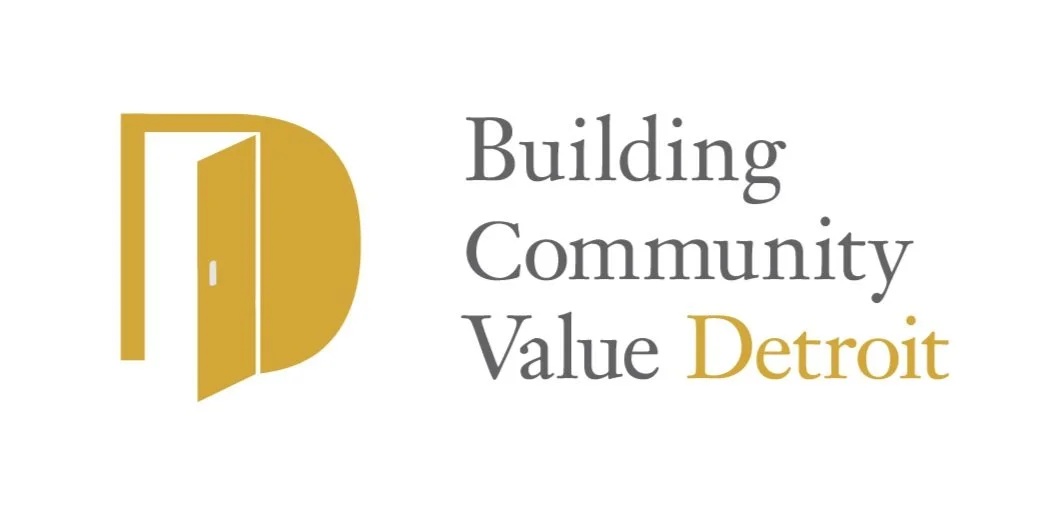Real Estate Development:
Building Value in Your Community
Real Estate Development: Building Value in Your Community is an online course developed in collaboration with the University of Michigan Center for Academic Innovation and Chase Cantrell, Lecturer at the University of Michigan Taubman College of Architecture and Urban Planning. The course introduces the fundamentals of real estate and community development, covering project feasibility, financial modeling, and social impact. Learners analyze neighborhood-scale projects, integrating history, demography, and culture to develop community-centered solutions. By the end of the course, participants gain the skills to collaborate with their communities and drive lasting, positive change.
The XR Team contributed to two educational video modules focused on property and neighborhood-scale evaluation. As the Set Designer and Environment Artist, I was responsible for designing and developing the virtual production environments. Working closely with Virtual Production Producer Chiemela Mgbeahuru, I translated storyboards and scripts into immersive, interactive settings that visually reinforced key learning objectives. My role involved designing the spatial layout, asset composition, and environmental storytelling to ensure clarity and engagement.
I created two distinct neighborhood environments, a site map, and essential architectural elements—including a grocery store, a luxury apt building, a school, a bank, a duplex, and a mixed-use building. Assets was carefully modeled and textured, with high-poly details developed for objects directly referenced by the instructor during teaching. The duplex, for instance, was designed to showcase key improvement areas, evolving through staged renovations to align with course concepts. Various background assets were “kit bashed” and stylized.
Environment Design
Though the scene appears fully built out in the final videos, this zoomed-out view reveals the bare elements outside the camera's frame. In the foreground, the presentation space opens to the environment, guiding the viewer’s attention toward the course content. While both videos use a version of this map, each is uniquely tailored to support the specific lesson.
Property Scale Evaluation Video
Architecturally, the assets in the property video are smaller in scale compared to those in the neighborhood evaluation. These assets, including residential and mid-use commercial multi-unit structures, focus on cosmetic and structural issues at the site level, rather than the neighborhood. A significant part of the design process was finding a balance between ‘realistic’ and low poly styles. The low poly meshes were chosen for stylistic and optimization purposes, ensuring compatibility with the dynamic materialization shader. The textures played a key role, highlighting important topics like foundation cracks and roof damage that Daisha would address in the course.
The reference images above were provided by the faculty to guide the design team in developing properties that would serve as exemplary examples for instruction. The videos below are vignettes pulled from the video that highlight the properties. The duplex video showcases a sample of the materialize shader that developers whipped up for the shoot.
Neighborhood Scale Evaluation Video
The neighborhood-scale evaluation was a technical highlight for our team. The senior developers set up a 'front plate' augmented map surface in front of the speaker to add depth, making it appear as though she was in the studio with the asset. The background features a more developed block, including a pedestrian-friendly street with bike lanes, bus stops, luxury apartments, and a bank at the intersection. The development of this area was shaped by discussions with faculty to ensure the scene closely resembled real-world case studies that learners could relate to.
Augmented Reality (XR Filming Method) - Area Map Table Surface
Below are images of the early stage development drawings and mockups for the AR Map Surface.
Below is a screenshot demonstrating the depth added to the scene, where the speaker appears to be positioned between a digital environment and a presentation table as if it were physically present.
Seen above are rendered vignettes of the bank, bike lanes, and luxury units that are discussed in the video.
The image above, provided by the faculty, illustrates a common example of roof damage that a prospective investor might encounter when scouting properties for rehab. The image with the blue background is the digital recreation placed in the environment for a render cut B-roll shot used in the final video.
Reflections and Mentions:
This project marked the XR Team’s first full integration of Extended Reality (XR) techniques into virtual production. While my focus was on environment design, senior developers Eric Schreffler and Moeezo Saleem implemented interactive effects, including a custom shader-driven materialization effect that made buildings appear in mid-air and a floating map tableau that added depth and immersion. This was the first major use of this method in a Center production, and it was exciting to see it come to life.
I also want to acknowledge the contributions of Taubman College Master’s students, Mardy Hillengas and Qilmeg Doudatcz, who assisted with early form exploration and asset modeling. This project set a new benchmark for our XR-driven productions, showcasing the impact of environment design in virtual education.
I'd like to mention and directly link to the organization that the faculty and speaker are affiliated with. Chase Cantrell is the executive director, and from a quick browse of the organization's site, it seems like an amazing initiative.












